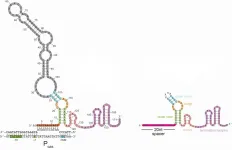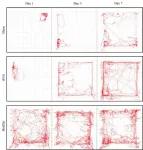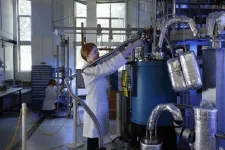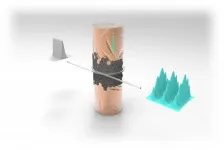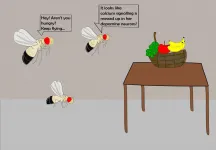INFORMATION:
The full article can be accessed at the OA journal Quantitative Science Studies'' website (https://doi.org/10.1162/qss_a_00091).
To learn more about AARC's thoughts on open access and the results of this project please visit https://academicanalytics.com/aarc-and-the-open-access-oa-publication-model/
Reference
Olejniczak AJ, & Wilson MJ. Who's writing Open Access (OA) articles? Characteristics of OA authors at Ph.D. granting institutions in the USA. Quantitative Science Studies. 2020. DOI: 10.1162/qss_a_00091.
About Academic Analytics Research Center (AARC)
Academic Analytics Research Center discovers and disseminates data and findings on issues of concern to the higher education community and the scholarly research enterprise. In addition to conducting original research, AARC disseminates the Academic Analytics commercial database to other scholars wishing to incorporate scientometric data in their research programs. AARC strongly supports open access and has committed to making all of their articles and datasets available openly. For more information about AARC please visit https://academicanalytics.com/aarc-scholarly-research/.
Who's writing open access articles?
2021-01-19
(Press-News.org) An Academic Analytics Research Center (AARC) study has found greater rates of authorship of open access (OA) research articles among scholars at more prestigious institutions with greater access to resources and job security. "The open access publishing model is growing, and open access successfully democratizes the results of research projects, but it's clear now that some scholars are more likely to be represented in the open access literature" said AARC director and lead author of the study Anthony Olejniczak, Ph.D.
The researchers analyzed characteristics of 182,320 open access authors at American research universities from 2014 through 2018. The study found similar results for both OA authors who paid article processing charges (APCs; the author-paid publication cost for an open access article in some publishing models) and those whose research ultimately ends up in OA repositories but did not necessarily pay APCs. In both cases, results show that the likelihood for a scholar to author an OA article increases with male gender, employment at a prestigious institution, affiliation with STEM disciplines, federal research funding support, and more advanced career stages.
Caroline Whitacre, Ph.D. (former Senior Vice President for Research at the Ohio State University and currently an Academic Advisor to Academic Analytics) commented "There are currently more than 12,500 open access journals in circulation, allowing unprecedented access of up-to-date scholarly information to the public. The importance of this study is that it provides a comprehensive look at authors publishing in open access journals across the US, highlighting notable characteristics of the faculty and their institutions."
The researchers agree that the OA movement provides a much-needed change to the way research is disseminated, finding that 46.3% of the 1.6 million articles they examined are OA articles. Olejniczak commented that "...although the results of research projects are increasingly open, there's still work to do to level the playing field in terms of who's voice is being democratized."
ELSE PRESS RELEASES FROM THIS DATE:
Gene-editing 'scissor' tool may also be a 'dimmer switch'
2021-01-19
In a series of experiments with laboratory-cultured bacteria, Johns Hopkins scientists have found evidence that there is a second role for the widely used gene-cutting system CRISPR-Cas9 -- as a genetic dimmer switch for CRISPR-Cas9 genes. Its role of dialing down or dimming CRISPR-Cas9 activity may help scientists develop new ways to genetically engineer cells for research purposes.
A summary of the findings was published Jan. 8 in Cell.
First identified in the genome of gut bacteria in 1987, CRISPR-Cas9 is a naturally occurring but unusual group of genes with a potential for cutting DNA sequences in ...
Nonsurgical treatment for cerebral infarction using wearable wireless ultrasound devices
2021-01-19
Cerebral infarction, commonly known as ischemic stroke, has a high mortality rate and causes severe damage to nervous cells in the brain owing to the loss of oxygen, which results in limiting body movements. Several technologies, including physiotherapy and brain stimulation techniques, are being developed and tested for the rehabilitation of brain nervous cells damaged by a stroke. In particular, low-intensity focused ultrasound is expected to be effective for rehabilitating neurological diseases such as stroke, as it can excite or inhibit nerve cells by delivering mechanical energy with high precision at the desired position, while ultrasound is penetrating the cranium without requiring a surgical operation.
Korea Institute of Science and Technology (KIST) announced that the research ...
One-dimensional quantum nanowires fertile ground for Majorana zero modes
2021-01-19
Why is studying spin properties of one-dimensional quantum nanowires important?
Quantum nanowires-which have length but no width or height-provide a unique environment for the formation and detection of a quasiparticle known as a Majorana zero mode.
A new UNSW-led study overcomes previous difficulty detecting the Majorana zero mode, and produces a significant improvement in device reproducibility.
Potential applications for Majorana zero modes include fault-resistant topological quantum computers, and topological superconductivity.
MAJORANA FERMIONS IN 1D WIRES
A Majorana fermion is a composite particle that is its own antiparticle.
Antimatter explainer: Every fundamental particle has a corresponding antimatter particle, with ...
A biological strategy reveals how efficient brain circuitry develops spontaneously
2021-01-19
A KAIST team's mathematical modelling shows that the topographic tiling of cortical maps originates from bottom-up projections from the periphery.
Researchers have explained how the regularly structured topographic maps in the visual cortex of the brain could arise spontaneously to efficiently process visual information. This research provides a new framework for understanding functional architectures in the visual cortex during early developmental stages.
A KAIST research team led by Professor Se-Bum Paik from the Department of Bio and Brain Engineering has demonstrated that the orthogonal organization of retinal mosaics in the periphery is mirrored onto the primary visual cortex and initiates ...
Semiconductor chip that detects exhaled gas with high sensitivity at room temperature
2021-01-19
Overview:
Third-year doctoral student Toshiaki Takahashi, associate professor Kazuhiro Takahashi, and their research team from the Department of Electrical and Electronic Information Engineering at Toyohashi University of Technology developed a testing chip using semiconductor micro-machining that can detect volatile gasses in exhaled breath in ppm concentrations at room temperature. A polymer that expands and contracts when gas is absorbed is formed on a flexibly deformable nanosheet, and the amount of deformation that occurs when a target gas is absorbed is measured, allowing gas to be detected at high sensitivity. ...
Bio-inspired: How lobsters can help make stronger 3D printed concrete
2021-01-19
New research shows that patterns inspired by lobster shells can make 3D printed concrete stronger, to support more complex and creative architectural structures.
Digital manufacturing technologies like 3D concrete printing (3DCP) have immense potential to save time, effort and material in construction.
They also promise to push the boundaries of architectural innovation, yet technical challenges remain in making 3D printed concrete strong enough for use in more free-form structures.
WATCH AND EMBED THE VIDEO: https://youtu.be/mpPAPlst42o
In a new experimental study, researchers at RMIT University ...
Optical data transmission speed increased by a factor of at least 10,000
2021-01-19
Pulsed lasers repeatedly emit light for a short period of time as if blinking. They have the advantage of focusing more energy than a continuous wave laser, whose intensity is kept unchanged over time. If digital signals are loaded in a pulsed laser, each pulse can encode one bit of data. In this respect, the higher the repetition rate, the more the amount of data that can be transmitted. However, conventional optical-fiber-based pulsed lasers have typically had a limitation in increasing the number of pulses per second above the MHz level.
The Korea Institute of Science and Technology (KIST) announced that the research ...
Research establishes antibiotic potential for cannabis molecule
2021-01-19
Synthetic cannabidiol, better known as CBD, has been shown for the first time to kill the bacteria responsible for gonorrhoea, meningitis and legionnaires disease.
The research collaboration between The University of Queensland and Botanix Pharmaceuticals Limited could lead to the first new class of antibiotics for resistant bacteria in 60 years.
The UQ Institute for Molecular Bioscience's Associate Professor Mark Blaskovich said CBD - the main nonpsychoactive component of cannabis - can penetrate and kill a wide range of bacteria including Neisseria gonorrhoeae, which causes ...
A neuronal cocktail for motivation
2021-01-19
'A journey of a thousand miles begins with a single step' is a popular adage that talks about the initial thrust required to embark on a task. However, once begun, how do we persevere on the job and not let it fall apart like a New Year resolution? How do we stay motivated?
Well, these are not just philosophical deliberations, but compelling science projects for neuroscience aficionados. Scientists have in fact been on the lookout for the neuronal and molecular players which are at the root of governing motivation.
Here is a research story from the generous fruit fly that identifies the machinery behind the fly's relentless flying pursuits.
Prof. Gaiti Hasan's group, in a recent study, has discovered that the ability of flies to sustain ...
Eating habits partly down to your genetics, finds new study
2021-01-19
Your food intake patterns are partly under genetic control, according to the latest research from researchers at King's College London, published today in the journal Twin Research and Human Genetics.
Researchers can study the quality of an individual's typical diet by using a type of analysis called 'dietary indices'. Researchers use dietary indices to understand what foods someone eats and the nutrients provided, compared with recommended guidelines.
The team analysed food questionnaire responses from 2,590 twins, using nine commonly used dietary indices. The researchers studied the degree of similarity among identical twins - who share 100% of their genes - compared with non-identical twins, who share 50% of their genes.
The team found that identical twin pairs ...
